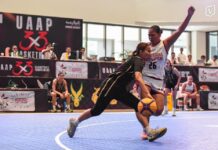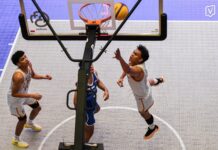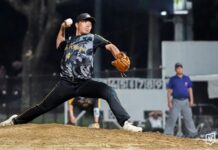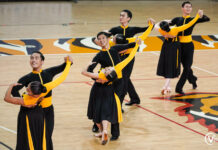HE WAS the Olympic “cop” who used to police the backcourt as a “cool, calculated, and heady” guard for the UST Glowing Goldies of the late 1940s.
But more than leading a fearsome crew of hardcourt deadshots that has defined UST’s post-World War II onslaughts in the UAAP, Gabriel “Gabby” Fajardo lent his playmaking brilliance for a greater cause: to serve flag and country in the world’s biggest sporting arena — the Olympics.
While the Philippine national team whom Fajardo had co-captained alongside older brother Fely in the 1948 London Games failed to capture a medal, it nevertheless gained something basketball honchos and pundits of his time call “a more valuable” reward: respect.
Last July 24, that greatest Olympic consolation gleaned brighter than any other medal which decorated the career of one of local basketball’s illustrious pioneers when people from various sporting divides in the country converged at the Funeraria La Paz in Marikina to pay their last respect to Fajardo, who succumbed to old age five days after at his home in Pasig City. He was 91.
Fajardo, together with fellow Thomasian basketball icons Ramon Campos Jr., Francisco Vestil, Pocholo Martinez, and Velentin “Tito” Eduque, composed the nucleus of the 1948 Philippine quintet, which finished 12th overall but ranked first among Asian teams in the London meet.
“There was no sign of him leaving us. A few weeks before he died, he was the same quiet guy we know, sometimes in good shape, sometimes not, yet still very accommodating,” Fajardo’s son Tony told the Varsitarian.
Prior to playing hoops, Fajardo, a basketball Hall-of-Famer, actually had volleyball as his first love, Tony revealed.
“In order to pursue his dream of playing in the prestigious Olympics, my father had to drop volleyball and shift to basketball because the sport was not yet part of the Olympics way back then,” Tony said. “As members of the national (basketball) team, my father and his teammates played not for money but for the genuine love of the sport.”
In fact, he also taught his granddaughters how to play basketball, Tony, aformer Colegio de San Juan de Letran (Letran) Knight, added.
His daughter Aurora said that aside from being a basketball player and coach, Fajardo once became a policeman and at the same time, an Algebra professor at Letran. One of his subordinates then at the Western Police District was Manila Mayor Alfredo Lim.
Ultimate lucky charm
Asked if Fajardo’s on-court lucky charm, Aurora said it was his beloved wife, Remedios, whose photo their father constantly brings to his games and displays on his study table.
As a father, the College of Commerce alumni was a “religious disciplinarian” who would always encourage his children to attend Mass every Sunday and live a life of prayer, even though they already have their own families.
According to Tito Tagle, sports editor of the defunct Philippine Herald and a former official of the Basketball Association of the Philippines, Fajardo was part of the UST Glowing Goldies champion team that ruled the 1940-1941 season of the UAAP.
The white-and-gold squad was monikered “Captains’ team” because the group was reinforced by ex-team captains Vestil, Salvador Siao, Enrique Novales, and Fajardo’ equally talented brother Fely.
Fajardo was also the coach and discoverer of Carlos “The Big Difference” Loyzaga who led the Philippine team to the bronze medal during the 1954 FIBA World Championship in Rio de Janiero, Brazil. J. S. Perey
















